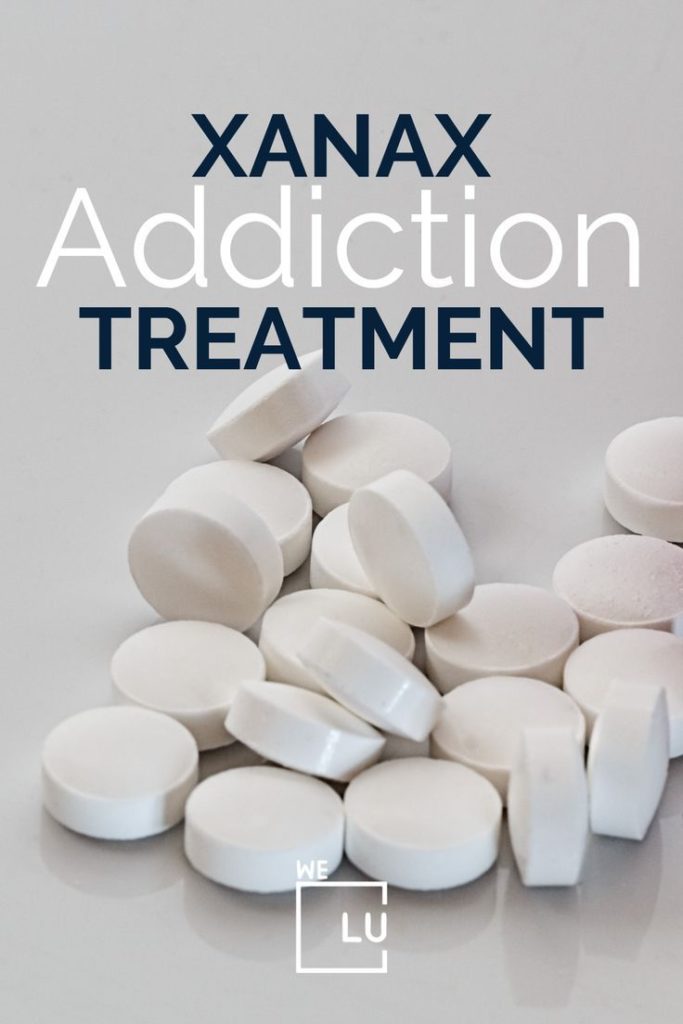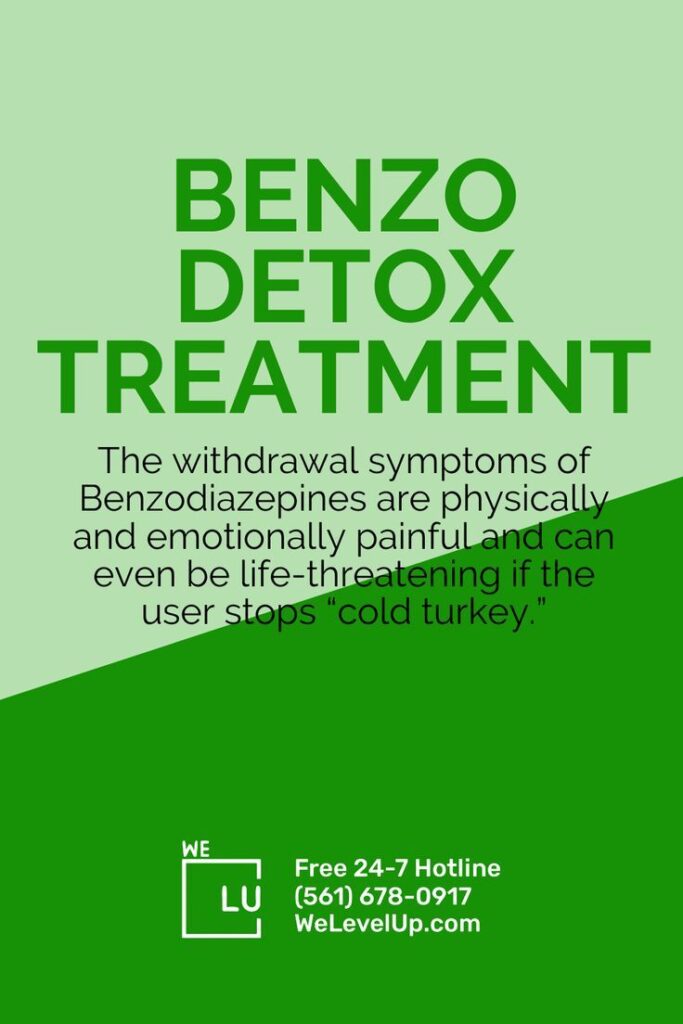Xanax Detox Overview
Xanax is a benzodiazepine medication commonly used to treat anxiety and panic disorders. However, it can be highly addictive, and prolonged use can lead to physical dependency and withdrawal symptoms if the drug is suddenly discontinued. Long-term use of Xanax can hurt mental and physical health. Detoxing from the drug can help to reduce the risk of long-term health complications and improve overall well-being.
To ensure your comfort and to safely manage your symptoms of withdrawal from Xanax addiction, it is highly advised that you detox and seek treatment in a facility under the careful supervision of a medical professional. Detox is your body’s technique of clearing out the poisons that have built up inside you. When you quit taking the chemical, your body flushes out the toxins and starts healing naturally.
Withdrawal symptoms may appear throughout the Xanax detox procedure. Detoxification should not be regarded as “the treatment” for Xanax addiction. Detox should not be considered “the treatment” for Xanax addiction. It is only the initial phase of your addiction recovery journey. Further treatment and rehab should be pursued after detoxing from Xanax to help you overcome your addiction.
Xanax Withdrawal Timeline
How long is Xanax withdrawal? The withdrawal timeline for Xanax can vary depending on factors such as the dosage, duration of use, and individual factors like age, health, and metabolism. However, the following is a regular timeline of Xanax withdrawal symptoms:
| 1-4 days | The first symptoms of Xanax withdrawal typically start within the first 24 hrs. after the last dose and can include anxiety, insomnia, sweating, and tremors. |
| 5-14 days | During this phase, symptoms can intensify, including increased heart rate, high blood pressure, seizures, and hallucinations. |
| 2-4 weeks | After two to four weeks, most physical symptoms should have subsided, but psychological symptoms such as depression, anxiety, and cravings may persist. |
| 4-8 weeks | Psychological symptoms may continue, but they should begin to improve after the first month. However, some individuals may experience post-acute withdrawal syndrome (PAWS), including persistent symptoms such as anxiety, insomnia, and irritability. |
How long can you detox Xanax? The timeline for Xanax detox is determined by several factors, including the individual’s dose, duration of use, and overall health. However, a general timeline for Xanax detox can include the following stages:
- Acute Withdrawal Phase (1-4 days): Symptoms of Xanax withdrawal typically begin within hours to a few days after the last dose, with symptoms such as anxiety, insomnia, agitation, and tremor
- Subacute Withdrawal Phase (1-2 weeks): Symptoms can persist or worsen during this phase, with symptoms such as insomnia, mood swings, and physical symptoms like muscle tension and cramps.
- Protracted Withdrawal Phase (several weeks to several months): Symptoms can continue for several weeks to several months, with symptoms such as anxiety, depression, and cognitive impairment.
Healthcare providers may use various strategies during detox to manage withdrawal symptoms and help individuals taper off Xanax gradually. This can include medications to help manage symptoms, such as clonazepam or diazepam, or non-pharmacological interventions, such as counseling, behavioral therapy, and lifestyle changes.
Xanax Withdrawal Symptoms
Withdrawal happens when you stop consuming or consume less Xanax in your body after you have developed a dependence on that substance. Dependence means that your mind and body need a steady presence of Xanax to function well.
Like other benzodiazepines, Xanax affects a neurotransmitter in the brain known as GABA. GABA is what causes calming and relaxing effects in the brain. The increased presence of GABA caused by using Xanax relaxes the mind and body. Suddenly taking away Xanax in your body causes an imbalance in your brain which causes your body to experience withdrawal.
Xanax withdrawal symptoms are similar to those caused by other benzodiazepines, like Ativan and Valium. Once you have started the detox, symptoms manifest within 6 to 12 hrs. of your previous Xanax use. The most common withdrawal symptoms from Xanax addiction are as follows:
- Headaches.
- Muscle aches and pain.
- Nausea and vomiting.
- Diarrhea.
- Depression.
- Anxiety.
- Irritability.
- Feelings of panic.
- Agitation.
- Blurred vision.
- Insomnia.
- Extreme fatigue.
- Tremors.
- Loss of concentration.

Skip To:
Learn More:
- Is Xanax Addictive? Signs, Effects & Treatment
- Can You Snort Xanax? Short and Long-Term Side Effects & Dangers
- Xanax and Weed, Is it Safe to Mix Them?
- Xanax and Opiate Withdrawal
- How Long Does Xanax Stay In Your System?
- Can You Mix Klonopin and Xanax?
- What Does Xanax Look Like? What Does a Xanax Pill Look Like? White Xanax Bars, Blue Xanax Bars, Green Xanax Bars, Yellow Xanax Bars…
- Xanax Addiction Signs, Alprazolam Effects, Abuse & Treatment
- What Happens When You Get Caught with Xanax?
- Can You Smoke Xanax? Dangers and Side Effects
Symptoms of withdrawal and their degree of severity may vary from person to person. The following factors may affect the degree of your Xanax withdrawal symptoms:
- Length of addiction.
- The severity of the addiction.
- Overall health.
- Previous attempts to quit.
- Your family history.
- Your response to withdrawal.
Xanax withdrawal can be dangerous and should be managed by medical professionals in a specialized detox facility. Abruptly stopping the use of Xanax or attempting to detox at home can be detrimental and may lead to severe complications.
Detoxing Xanax Fact Sheet
Generic Name: Alprazolam (al-PRAY-zoe-lam)
Brand Names: Xanax, Xanax XR
Drug Class: Benzodiazepines
Understanding Xanax Addiction
Xanax is the common name for alprazolam. Xanax is a prescription medication for panic attacks and anxiety disorders. Xanax belongs under the Benzodiazepine drug class. Benzodiazepines are safe when prescribed by your doctor but can cause dependence and addiction when misused. Xanax increases the neurotransmitter GABA in our brain, promoting calmness and relaxation. Sudden Xanax detox is not recommended. This could put someone at higher risk of experiencing severe withdrawal symptoms.
Xanax detox should be performed in a specialized medical facility under the supervision of qualified medical professionals experienced in managing benzodiazepine withdrawal. The detox protocol for Xanax may vary depending on the individual’s unique situation, but generally, the following steps are followed:
- Assessment: The medical team will thoroughly evaluate the person’s physical and mental health to determine the best course of treatment. This may include laboratory tests, a physical exam, and a psychological evaluation.
- Tapering: The medical team will gradually reduce the individual’s dosage of Xanax to minimize the severity of withdrawal symptoms. This process is known as tapering, and it can take a few weeks to complete, based on the individual’s dose and duration of use.
- Medications: Sometimes, medicines may be prescribed to manage withdrawal symptoms. These may include anti-anxiety drugs, sleep aids, and medications to control seizures and other complications.
- Supportive Care: The medical team will provide supportive care to manage symptoms and ensure the individual’s safety and comfort. This may include intravenous fluids to prevent dehydration, nutritional support, and close monitoring of vital signs.
- Counseling and Therapy: During detox, the individual may participate in counseling and treatment to address addiction’s psychological and emotional aspects. This may include individual and group therapy, cognitive-behavioral therapy, and other evidence-based therapies.
- Aftercare: After detox, the individual may transition to an addiction treatment program to continue their recovery. This may include inpatient or residential treatment, ongoing counseling and therapy, and participation in support groups.

How to detox from Xanax? And what helps with Xanax withdrawal? Xanax detox can be dangerous, and attempting to detox at home or without medical supervision can lead to severe complications. Therefore, seeking professional help and support is crucial when detoxing from Xanax.
Xanax Addiction Treatment
It is not recommended to quit Xanax use suddenly because of the risks associated if you stop abruptly. Doctors prefer gradual dose reduction or tapering as a treatment option for Xanax addiction.
The doctor starts by evaluating how much Xanax a patient has been using during his withdrawal, and then he prescribes a specific Xanax dosage that the patient should consume initially. After, the doctor will gradually taper the amount of Xanax being used as well as monitor the symptoms of withdrawal experienced. The doctor will continue to monitor the dosage until the body can function without Xanax in our system.
Another option is substitute tapering, wherein a substitute drug may be used to avoid a severe withdrawal. This method is used if a patient experiences severe withdrawal symptoms. Diazepam is commonly used because it has a much longer half-life than Xanax. Having a longer half-life means that the effects of the drug last longer than Xanax.
Both methods of tapering have their respective advantages and disadvantages. The doctor determines which of the two tapering methods is most appropriate for a patient based on the degree of his addiction. However, substitute tapering is challenging as it is tricky to form the proper balance between the dose of the substitute drug to be prescribed and the maintenance dose of Xanax.
How Long To Detox From Xanax?
How long do Xanax withdrawal last? The duration it takes to detox from Xanax can vary based on several aspects, including the individual’s dosage, use time, and overall health. Generally, the detox process can take several weeks to several months, depending on the individual’s situation. Here are some aspects that can influence the detox timeline:
- Tapering schedule: The medical team will gradually reduce the individual’s dosage of Xanax to minimize the severity of withdrawal symptoms. The duration it takes to complete the tapering process can vary depending on the individual’s dose and duration of use.
- Medical complications: If the individual experiences complications during the detox process, such as seizures or hallucinations, they may need to stay in the medical facility for an extended period until their symptoms are stabilized.
- Psychological factors: Detoxing from Xanax can trigger psychological symptoms such as depression and anxiety attacks, which may persist even after physical symptoms have subsided. Individuals may sometimes require ongoing therapy or counseling to manage these symptoms.
- Aftercare: Once the detox process is complete, the individual may require ongoing treatment and support to prevent relapse and maintain recovery.
Continue reading these articles to find out how long does it take to withdrawal from Xanax?

Get Your Life Back
Find Hope & Recovery. Get Safe Comfortable Detox, Addiction Rehab & Dual Diagnosis High-Quality Care.
Hotline(844) 597-1011Xanax Statistics
Xanax is typically combined with other substances, such as alcohol and opioids, which can increase the risk of Xanax overdose and other adverse health effects. The statistics below highlight the importance of the safe and responsible use of prescription medications and the need for effective treatment options for individuals struggling with Xanax addiction and dependence.
27 Million
Xanax is the most prescribed benzodiazepine medication in the US, with over 27 million written prescriptions in 2019.
Source: NCBI
11,537
In 2018, benzodiazepines, including Xanax, were involved in 11,537 drug overdose deaths in the United States.
Source: NIDA
40%
Roughly 40% of people who use Xanax for six or more weeks become addicted to the medication.
Source: NCBI
Xanax Withdrawal Treatment at Home
Does anything help Xanax withdrawal at home? It is generally not recommended to undergo Xanax withdrawal treatment at home without medical supervision, as withdrawal symptoms can be intense and potentially detrimental. Working with an addiction treatment professional to develop a safe and effective treatment plan that considers the individual’s specific needs and medical history is critical.
That being said, there are helpful tips that individuals can take at home to support their recovery during Xanax withdrawal, including the following:
- Establish a regular sleep time: Insomnia is a common symptom of Xanax withdrawal, so establishing a regular sleep schedule can improve and promote better sleep hygiene.
- Practice relaxation techniques: Deep breathing, meditation, or yoga can help reduce anxiety and promote relaxation during Xanax withdrawal.
- Exercise regularly: Physical activity can help lower stress and anxiety and promote better sleep, particularly during Xanax withdrawal.
- Eat a healthy diet: Eating a healthy diet with whole grains, nutrient-rich vegetables, and fruits can help support overall health and well-being during Xanax withdrawal.
- Avoid alcohol and other substances: Alcohol and other substances can interfere with detoxification and may increase the risk of withdrawal symptoms and complications.
It is crucial to seek medical aid and work with an addiction treatment professional if you are considering Xanax withdrawal. A healthcare provider can develop a treatment plan that considers the individual’s needs and medical history and offer guidance and support throughout the withdrawal process.
Xanax Detox Kit
It is not recommended to attempt Xanax (alprazolam) detox using a detox kit, as detoxification can be complex and potentially dangerous. Detox kits are often marketed as a quick and easy solution for detoxification, but they may not be safe or effective for everyone.
The best approach to Xanax detox is to work with an addiction treatment professional who can develop a personalized Xanax detox plan that considers the individual’s specific needs and medical history. Depending on the individual’s situation, a healthcare provider may gradually taper the dosage of Xanax over several weeks to months to help minimize the risk of withdrawal symptoms and offer other therapies or medications to manage symptoms.

Get Help. Get Better. Get Your Life Back.
Searching for Accredited Drug and Alcohol Rehab Centers Near You?
Even if you have failed previously and relapsed, or are in the middle of a difficult crisis, we stand ready to support you. Our trusted behavioral health specialists will not give up on you. When you feel ready or just want someone to speak to about therapy alternatives to change your life call us. Even if we cannot assist you, we will lead you to wherever you can get support. There is no obligation. Call our hotline today.
(844) 597-1011Xanax for Alcohol Withdrawal
Does Xanax help with alcohol withdrawal symptoms? Xanax can be used as part of a treatment plan for alcohol withdrawal, but it should only be taken under the close medical supervision of an addiction treatment professional.
Alcohol withdrawal can be a potentially harmful condition that can cause severe symptoms, including seizures and delirium tremens. Xanax can help manage anxiety, tremors, and insomnia during alcohol withdrawal. Still, it should be used cautiously and with other treatments, such as intravenous fluids, vitamins, and electrolytes.
Xanax is a potent benzodiazepine that can be habit-forming and has a high potential for drug addiction and misuse. It shall only be taken as a healthcare professional advises, and the dose should be gradually tapered off over several weeks to avoid withdrawal symptoms. It is vital to seek medical aid if you or someone you’re concerned with is experiencing alcohol withdrawal, as it can be life-threatening. A healthcare provider can develop a safe and effective treatment plan that considers the individual’s needs and medical history and can provide support and guidance throughout recovery. Does Xanax help alcohol withdrawal? Medical professionals can determine whether you cannot take Xanax for alcohol withdrawal.

Both withdrawal from Xanax and alcohol can be potentially detrimental, especially when attempted without medical supervision. It is crucial to seek medical aid if you or someone you’re concerned with is experiencing withdrawal symptoms from alcohol or Xanax. A healthcare provider can develop a safe and effective treatment plan that considers the individual’s needs and medical history and can provide support and guidance throughout recovery.
Alcohol and Xanax Withdrawal Symptoms
Alcohol and Xanax withdrawal symptoms can be similar because both substances affect the brain’s GABA receptors, which regulate anxiety and relaxation.
Symptoms of alcohol withdrawal can include:
- Anxiety.
- Tremors or shakes.
- Sweating.
- Nausea and vomiting.
- Insomnia.
- Seizures.
- Delirium tremens. (a severe form of withdrawal that contains signs of hallucinations, confusion, and disorientation)
What are the withdrawal symptoms of Xanax? Symptoms of Xanax withdrawal can include:
- Anxiety.
- Insomnia.
- Tremors or shakes.
- Sweating.
- Nausea and vomiting.
- Headaches.
- Muscle pain and stiffness.
- Seizures. (in rare cases)
Top 7 Xanax Withdrawal Stories FAQs
-
How long do Xanax withdrawals last?
The first stage of Xanax withdrawal symptoms typically begins within 24 to 72 hrs. after the last dose of Xanax and may include anxiety, irritability, sweating, tremors, and insomnia. As withdrawal progresses, individuals may experience more severe symptoms such as seizures, hallucinations, and delirium tremens (DTs), which can be life-threatening. After the acute phase, some individuals may experience more long-term symptoms such as insomnia, anxiety, and depression. These Xanax withdrawal symptoms may linger for a few weeks or months after the initial withdrawal.
-
Can you switch from Xanax to Klonopin without withdrawal?
Switching from Xanax (alprazolam) to Klonopin (clonazepam) can be done under medical supervision and with a tapering plan, which can help minimize the risk of withdrawal symptoms. However, some individuals may still experience withdrawal symptoms during the transition. Both Xanax and Klonopin are benzodiazepines, which means they work in similar ways in the brain. However, they have different pharmacokinetics, meaning they are absorbed and eliminated from the body at different rates. Klonopin has a longer half-life than Xanax, which means it stays in the body longer. This may make it a sufficient option for individuals who experience rebound anxiety or withdrawal symptoms when Xanax wears off. A healthcare provider can develop a personalized tapering plan that gradually reduces the dosage of Xanax while simultaneously introducing Klonopin at a low dose. This can help prevent abrupt withdrawal symptoms and minimize the risk of rebound anxiety. The dosage of Klonopin can then be gradually increased over time as Xanax is tapered off. Following a healthcare provider’s instructions carefully is critical to ensure a safe and effective transition between medications.
-
How long until Xanax withdrawals start?
Generally, withdrawal symptoms can begin within hours to a few days after the previous dose of Xanax. Acute Xanax withdrawal symptoms typically start within 24 to 72 hrs. after the last use and may include anxiety, irritability, sweating, tremors, and insomnia. As withdrawal progresses, individuals may experience more severe symptoms such as seizures, hallucinations, and delirium tremens (DTs), which can be life-threatening.
-
Can gabapentin help with Xanax withdrawal?
Gabapentin is a medication sometimes used to help with Xanax withdrawal symptoms. While it is not explicitly approved for this use, some healthcare providers may prescribe it off-label as part of a comprehensive pharmacotherapy program for Xanax withdrawal. Gabapentin is an anticonvulsant medication that affects the activity of certain neurotransmitters in the brain. It can help to lessen anxiety, improve sleep, and decrease other symptoms associated with Xanax withdrawal. Research has shown that gabapentin can effectively reduce Xanax withdrawal symptoms such as anxiety, insomnia, and tremors. It usually begins at a low dose and gradually increases, combined with other medications or therapies as needed.
-
Can Xanax withdrawals kill you?
One of the most dangerous complications of Xanax withdrawal is the development of seizures. Seizures can occur when the brain tries to compensate for the sudden absence of Xanax, which can lead to electrical overactivity. In some cases, seizures can cause injury or death. Another potential complication of Xanax withdrawal is the development of delirium tremens (DTs), a severe form of alcohol withdrawal that can also occur in users who have used high doses of Xanax for an extended period. DTs can cause hallucinations, confusion, fever, and rapid heartbeat and can be fatal if left untreated.
-
What are the withdrawal symptoms of Xanax and Valium?
Xanax (alprazolam) and Valium (diazepam) are benzodiazepines, which means they have similar effects on the brain and body. Withdrawal from these medications can produce similar symptoms, including anxiety, irritability, insomnia, tremors, sweating, headaches, nausea, vomiting, muscle aches, confusion, and seizures (in severe cases). The onset and severity of these symptoms can vary based on the individual and various aspects, such as the dose, duration of use, and whether the individual is tapering off the medication or stopping it suddenly.
-
Is it safe to take hydroxyzine for Xanax withdrawal?
Hydroxyzine is an antihistamine sometimes used to help manage symptoms of Xanax withdrawal, particularly anxiety and insomnia. It is not explicitly approved for this use, but some healthcare providers may prescribe it off-label as part of a comprehensive pharmacotherapy plan for Xanax withdrawal. Hydroxyzine hinders the effects of histamine in the brain, which can cause a soothing effect and anxiety reduction. It is generally viewed as safe and efficient for short-term use but may have potential side effects such as drowsiness, dizziness, dry mouth, and blurred vision. Before starting treatment, discussing hydroxyzine’s potential benefits and risks with a healthcare provider is crucial. Hydroxyzine can interact with other medications and may not be appropriate for everyone. A healthcare provider can help determine if hydroxyzine is a safe and proper treatment option for Xanax withdrawal symptoms.
Xanax for Opiate Withdrawal
Does Xanax help with opiate withdrawal? Xanax is not typically used to treat opiate withdrawal. While Xanax for opioid withdrawal may help manage anxiety and other symptoms, it is ineffective in treating the physical symptoms of withdrawal, such as nausea, vomiting, and muscle aches. Instead, healthcare professionals often use medications such as methadone, buprenorphine, or naltrexone to manage opiate withdrawal symptoms and prevent relapse. These medications are specifically designed to target the physical symptoms of withdrawal and can help individuals gradually wean off opiates.
It is significant to seek medical attention if you or a loved one is experiencing opiate withdrawal, as it can be difficult. A healthcare provider can develop a safe and effective treatment plan that considers the individual’s needs and medical history and can provide support and guidance throughout recovery.
First-class Facilities & Amenities
World-class High-Quality Addiction & Mental Health Rehabilitation Treatment
Rehab Centers TourRenowned Addiction Centers. Serene Private Facilities. Inpatient rehab programs vary.
Addiction Helpline(844) 597-1011Proven recovery success experience, backed by a Team w/ History of:
15+
Years of Unified Experience
100s
5-Star Reviews Across Our Centers
10K
Recovery Success Stories Across Our Network
- Low Patient to Therapist Ratio
- Onsite Medical Detox Center
- Comprehensive Dual-Diagnosis Treatment
- Complimentary Family & Alumni Programs
- Coaching, Recovery & Personal Development Events
Xanax Withdrawal Seizure
Seizures are a potential complication of Xanax withdrawal. They can occur when the brain tries to compensate for the sudden absence of the medication, leading to electrical overactivity. Seizures associated with benzodiazepine withdrawal, including Xanax, can occur hours to days after stopping or reducing the dose too quickly. The risk of seizures is higher in individuals who have used high doses of benzodiazepines for an extended period.
Seizures associated with Xanax withdrawal can vary in severity and duration and can be life-threatening in some cases. It is essential to seek medical aid as soon as possible if a seizure occurs during Xanax withdrawal. To lower the risk of seizures and other complications associated with Xanax withdrawal, it is recommended to gradually taper off Xanax under the supervision of a healthcare provider. A healthcare provider can monitor symptoms and adjust the tapering schedule as needed to minimize the risk of complications.
Can Xanax Withdrawal Cause Permanent Damage?
Long-term use of Xanax or other benzodiazepines can cause alterations in the brain that can affect cognitive and emotional functioning. Studies have found that long-term benzodiazepine use can lead to changes in the brain’s GABA receptor system, resulting in cognitive impairments such as memory loss and difficulty concentrating.
Furthermore, long-term benzodiazepine use has been correlated with an increased risk of dementia, even if the exact relationship between benzodiazepines and dementia is not fully understood.
Regarding physical damage, the primary risk of Xanax withdrawal is the potential for seizures, which can be life-threatening if not properly managed. However, with appropriate medical care and support, seizures, and other withdrawal symptoms can be effectively managed, reducing the risk of complications.
Xanax Withdrawal Psychosis
In some cases, more severe Xanax withdrawal symptoms, such as psychosis, may occur. Psychosis is a mental state described by a loss of contact with reality and can include symptoms such as hallucinations, delusions, and disordered thinking.
Xanax withdrawal-induced psychosis is rare, but it can occur in individuals who have been taking high doses of Xanax for an extended period or who have a history of mental illness. The risk of psychosis may also be higher in individuals who stop taking Xanax suddenly or without medical supervision.
To prevent Xanax withdrawal-induced psychosis, it is essential to taper off Xanax slowly and under the supervision of a medical professional. This can lower the risk of severe withdrawal symptoms and lessen the risk of complications.
Can Xanax Withdrawal Kill You?
The most significant risk associated with Xanax withdrawal is potential seizures, which can be life-threatening if not properly managed. Seizures can occur when the brain’s chemistry is disrupted by the sudden cessation of Xanax use, particularly in individuals taking high drug doses for an extended period. Other potential complications of Xanax withdrawal include extreme confusion, hallucinations, and suicidal thoughts.
How to withdraw from Xanax? To reduce the risk of Xanax withdrawal-related complications, medical professionals can monitor your condition and provide appropriate interventions, such as medications, to manage symptoms and prevent seizures. Sometimes, hospitalization may be necessary to ensure your safety and well-being. It is also crucial to avoid stopping Xanax suddenly or without medical supervision, as this can increase the risk of severe withdrawal symptoms and complications.
Side Effects of Xanax Withdrawal
What does Xanax withdrawal feel like? Xanax withdrawal can cause various physical, psychological, and emotional symptoms. The following is a list of several Xanax withdrawal symptoms:
Physical symptoms:
- Seizures.
- Sweating.
- Headaches.
- Nausea.
- Vomiting.
- Diarrhea.
- Rapid heartbeat.
- Tremors.
- Muscle pain and stiffness.
Psychological symptoms:
- Anxiety.
- Depression.
- Irritability.
- Insomnia.
- Agitation.
- Panic attacks.
- Hallucinations.
- Delirium.
- Confusion.
- Paranoia.
Emotional Xanax withdrawal side effects:
- Intense drug cravings: People withdrawing from Xanax may undergo strong cravings for the drug, which can be challenging to resist.
- Mood swings: Xanax withdrawal can cause extreme mood swings, ranging from euphoria to depression, irritability, and anger.
- Emotional instability: People going through Xanax withdrawal may experience emotional instability, including rapid changes in mood and emotional outbursts.
- Irritability: Many people withdrawing from Xanax report feeling irritable and easily agitated.
- Anxiety: Xanax withdrawal can cause anxiety, which may be severe in some cases.
- Insomnia: Problem sleeping is a typical sign of Xanax withdrawal, which can exacerbate other emotional symptoms.

Seek medical attention if you are experiencing emotional symptoms of Xanax withdrawal. Therapy and support group meetings can also help manage the emotional challenges of Xanax withdrawal.
Xanax Detoxification & Addiction Treatment
Detox is the starting phase of your addiction recovery journey. Before you can be cured of substance disorder, you must dispel the abused substance from your system and allow your body to recover and heal.
Detoxifying your body may be uncomfortable, but it is a necessary phase if you want to overcome your Xanax addiction. Without Xanax detox and withdrawal, your body will remain dependent on the substance controlling it.
Doing Xanax detox at home or in an outpatient clinic may be possible if you have a mild degree of Xanax addiction. However, it is strongly recommended that your detox be conducted in an inpatient detox rehab facility because some withdrawal symptoms associated with Xanax addiction may be severe or even life-threatening. Hence, supervised Xanax detox in a residential treatment facility is a viable option to minimize the severity and risk of your Xanax withdrawal symptoms.
Medical Xanax Detox
Detoxing in a residential rehab facility affords you round-the-clock care during detox. It is likewise medically supervised, and medical assistance is always available. The environment again helps you focus more on your detox and recovery.
Detoxing in a residential treatment center gives you all the medical help and therapy support needed to complete your Xanax detox successfully. Undergoing detox at a residential or inpatient clinic allows a person to withdraw with medical assistance. We call this ‘medical detox.’ Unlike attempting to quit at home, going through withdrawal at the clinic gives you access to all the tools you need to succeed.

Continuing Treatment for Xanax Addiction
Xanax detox is only the initial phase to overcome your dependence and addiction to Xanax completely. To ensure the success of your recovery and free your mind and body from Xanax addiction, attending succeeding treatments will effectively address your addiction problems.
Further treatment includes:
- Educational lectures.
- Structured recovery programming.
- Life skills development.
- 12-Step facilitation therapy.
- Individual drug counseling.
- Group counseling.
- Family Counseling.
- Alternative therapies like music therapy or art therapy.
- Behavioral therapy methods include contingency management, cognitive behavioral therapy, and rational emotive behavioral therapy.
If you or someone you’re concerned with is struggling with Xanax addiction, contact We Level Up today and start your journey towards a drug-free life. Our health professionals will carefully evaluate your condition and recommend a program appropriate for you.
Xanax Detox Near Me
If you or someone you’re concerned with is seeking a Xanax detox, here are some factors to consider when looking for a detox program:
- Medical Supervision: Xanax withdrawal can be dangerous, and choosing a detox program that offers medical supervision is crucial to ensure the patient’s safety. The detox program should have licensed medical professionals available 24/7 to monitor the patient’s vital signs, manage any medical complications that arise, and provide guidance throughout the detox process.
- Individualized Treatment: Every patient’s needs are unique, and choosing a detox program that provides individualized care tailored to the patient’s specific needs is essential. This may include medication-assisted treatment, therapy, and support groups.
- Quality of Care: Look for a detox program accredited by a recognized organization, such as the (JCAHO) Joint Commission on Accreditation of Healthcare Organizations or the (CARF) Commission on Accreditation of Rehabilitation Facilities. These accreditations ensure that the treatment program meets high standards of care and is regularly evaluated for quality and effectiveness.
- Aftercare Support: Detox is just the first step in the recovery process. It is crucial to choose a detox program that offers aftercare support to help patients maintain their sobriety after leaving the program. This may include therapy, support groups, and ongoing medical supervision.
- Cost: Detox programs can vary widely, so choosing an affordable program that fits your budget is essential. Insurance may cover some programs, so checking with your insurance card provider to find out what is under your coverage is vital.
By considering these aspects, you can decide on a Xanax detox program that provides the support and care you or someone you’re concerned with needs to detox and begin the recovery process successfully.
Inpatient rehab is a highly effective option for Xanax detox, as it provides patients with comprehensive support and therapy in a safe, structured environment. During Xanax detox, it is crucial to have medical professionals available to monitor the patient’s vital signs and manage any medical complications that arise. Inpatient rehab offers 24/7 medical supervision to ensure the safety of the patient.
Xanax detox is just the first step in the recovery process, and it is necessary to have a plan in place for aftercare. Inpatient rehab typically offers aftercare planning and support, which may include ongoing therapy, support groups, and medical supervision. Call us today at We Level Up to explore treatment options that can work best for you!

World-class, Accredited, 5-Star Reviewed, Effective Addiction & Mental Health Programs. Complete Behavioral Health Inpatient Rehab, Detox plus Co-occuring Disorders Therapy.
CALL(844) 597-1011End the Addiction Pain. End the Emotional Rollercoaster. Get Your Life Back. Start Drug, Alcohol & Dual Diagnosis Mental Health Treatment Now. Get Free No-obligation Guidance by Substance Abuse Specialists Who Understand Addiction & Mental Health Recovery & Know How to Help.
Top 10 How Long Does It Take To Withdraw From Xanax? FAQs
-
How long does it take to detox from Xanax?
The acute phase of Xanax detox typically lasts for several days to a week. During this time, individuals may experience intense withdrawal symptoms such as anxiety, insomnia, tremors, sweating, and nausea. Following the acute phase, some individuals may experience protracted withdrawal symptoms, which can persist for weeks to months after the last dose. Depending on the individual’s situation, detoxification may take several weeks to months. It is crucial to seek medical aid and work with an addiction treatment healthcare professional if you consider detoxing from Xanax. A healthcare provider may gradually taper the dosage of Xanax over several weeks to months to help minimize the risk of withdrawal symptoms and may offer other therapies or medications to manage symptoms. In some severe withdrawal cases, hospitalization may be required to manage painful symptoms and ensure the safety of the individual.
-
How long does Xanax withdrawal last?
Generally, the acute Xanax withdrawal symptoms may begin within several hours to a few weeks after the last dose and typically last for several days to a week. Symptoms can be particularly intense during this time, including anxiety, insomnia, tremors, sweating, and nausea. Following the acute phase, some individuals may experience protracted withdrawal symptoms, which can persist for weeks to months after the last dose. Prolonged withdrawal symptoms may include insomnia, anxiety, depression, and difficulty concentrating. Various factors can influence the duration of Xanax withdrawal, and it is crucial to seek medical attention and work with a healthcare professional if you are experiencing withdrawal symptoms. A healthcare provider may gradually taper the dosage of Xanax over several weeks to months to help minimize the risk of withdrawal symptoms and may offer other therapies or medications to manage symptoms.
-
How long does Xanax withdrawal insomnia last?
Insomnia is a common symptom of withdrawing from Xanax. It can persist for several weeks to several months, based on the individual and the duration and dose of Xanax use. The acute phase of Xanax withdrawal typically lasts several days to a week, and insomnia may be particularly severe. After the acute phase, symptoms may gradually improve over several weeks to several months.
-
Can you die from Xanax withdrawal symptoms?
The symptoms of withdrawal from Xanax are physically and mentally detrimental, and in rare cases, it can be fatal. While death from the symptoms of Xanax withdrawal is uncommon, it can occur in individuals who have been taking high doses of the medication for a prolonged period or have a history of seizures or other medical conditions. Xanax withdrawal symptoms can include anxiety, irritability, insomnia, tremors, sweating, nausea, and seizures. Seizures can be a severe complication of signs of Xanax withdrawal and may lead to coma or death in some cases.
-
Can you withdraw from .5 mg Xanax?
Yes, low dose Xanax withdrawal can occur even at Xanax withdrawal 1 mg a day, including a dose of 5 mg Xanax a day withdrawal. The risk of Xanax addiction withdrawal is increased if the Benzo has been taken for a prolonged period or if the drug has been misused or abused.
-
Can you have withdrawals from .25 Xanax?
Yes, withdrawal symptoms can occur even at low doses of Xanax (alprazolam), including an amount as low as 0.25mg or even Xanax 0.125 withdrawal. The risk of withdrawal symptoms increases if Xanax has been taken for an extended period or the medication has been misused or abused.
-
What helps Xanax withdrawal?
Withdrawal from Xanax symptoms can be uncomfortable and potentially dangerous. It is crucial to seek medical support and cooperate with a healthcare professional if you are experiencing even Xanax withdrawal symptoms low dose.
-
How much Xanax causes withdrawal?
Xanax withdrawal signs can occur even if the medication has been taken as prescribed, but it is more likely to transpire if it is misused or abused. Generally, withdrawals from Xanax can occur when the medication is discontinued abruptly or the dosage is reduced too quickly. Withdrawal symptoms from Xanax can include anxiety, irritability, insomnia, tremors, sweating, nausea, and seizures. The severity and duration of these Benzo withdrawal symptoms Xanax produce can also vary from person to person.
-
Does Xanax help with alcohol withdrawal timeline?
Benzodiazepines are sometimes used for alcohol withdrawal syndrome (AWS) treatment, a set of symptoms that can occur when someone physically dependent on alcohol stops drinking. Benzodiazepines, such as Xanax dosage for alcohol withdrawal symptoms, can help manage symptoms of AWS by reducing anxiety, agitation, and seizures. However, benzodiazepines can also be habit-forming and may have withdrawal symptoms if not used as directed.
-
Can you take Xanax for tramadol withdrawal?
Xanax (alprazolam) is a prescription Benzo in the benzodiazepine class of drugs. On the other hand, tramadol is an opioid pain medication that can be habit-forming and cause withdrawal symptoms when discontinued after prolonged use. Xanax is a prescription drug under the Benzo class of drugs and is typically used for the treatment of anxiety issues and panic disorders treatment. On the other hand, tramadol is an opioid pain medication that can be habit-forming and cause withdrawal symptoms when discontinued after prolonged use. If you are experiencing tramadol withdrawal symptoms, seeking medical attention and working with a healthcare professional to develop a safe and effective Xanax detox plan is crucial. This may include tapering off tramadol gradually under medical supervision and other medications or therapies to manage withdrawal symptoms.
Prescription Drug Abuse & Prescription Medication Addiction Recovery & Sobriety Story
Get FREE addiction treatment insurance check – https://welevelup.com/rehab-insurance/ If you or a loved one is struggling with Xanax addiction or other substance use disorder(s), call a FREE consultation 24/7 at (561) 678-0917
Jen’s Addiction Recovery Testimonial Video Transcript.
“I wanted my life back. I was a shell of a person. I wanted to be trusted, I wanted relationships back that I lost, mainly my children and family.
It started innocent enough, I got into a car accident, and then I got kind of sucked into the whole, you know, medication issue with the pills. And before I knew it, I was in a cloud.
I was sucked in by addiction, and with my mind, I kept thinking it was OK because a doctor was prescribing this for me, a doctor was giving me this, a doctor was giving me that. So, I didn’t think I was doing anything wrong.
Level Up supports my family and my relationships with my family, and they’ve helped me grow as a person.
When I first started there, I was so intimidated and kind of scared, you know? But, they’ve taught me, they’ve kind of taught me how to come into my own.
And then, you know, when I get the call from my twenty-one-year-old daughter in the middle of the day, just to say ‘I love you, Mom.’ that’s amazing.”
Experience Transformative Recovery at We Level Up Treatment Centers.
See our authentic success stories. Get inspired. Get the help you deserve.
Start a New Life
Begin with a free call to an addiction & behavioral health treatment advisor. Learn more about our dual-diagnosis programs. The We Level Up Treatment Center Network delivers recovery programs that vary by each treatment facility. Call to learn more.
- Personalized Care
- Caring Accountable Staff
- World-class Amenities
- Licensed & Accredited
- Renowned w/ 100s 5-Star Reviews
We’ll Call You
Search We Level Up Xanax Detox, Mental Health Topics & Resources
Sources
[1] George TT, Tripp J. Alprazolam. [Updated 2022 May 1]. In: StatPearls [Internet]. Treasure Island (FL): StatPearls Publishing; 2023 Jan-. Available from: https://www.ncbi.nlm.nih.gov/books/NBK538165/
[2] Ait-Daoud N, Hamby AS, Sharma S, Blevins D. A Review of Alprazolam Use, Misuse, and Withdrawal. J Addict Med. 2018 Jan/Feb;12(1):4-10. DOI: 10.1097/ADM.0000000000000350. PMID: 28777203; PMCID: PMC5846112.
[3] XANAX® alprazolam tablets, USP – Food & Drug Administration (FDA)
[4] Alprazolam: MedlinePlus Drug Information – Available from: U.S. Department of Health and Human Services National Institutes of Health
[5] Pétursson H. The benzodiazepine withdrawal syndrome. Addiction. 1994 Nov;89(11):1455-9. DOI: 10.1111/j.1360-0443.1994.tb03743.x. PMID: 7841856.
[6] Detoxification and Substance Abuse Treatment [Internet]. Rockville (MD): Substance Abuse and Mental Health Services Administration (US); 2006. (Treatment Improvement Protocol (TIP) Series, No. 45.) Available from: https://www.ncbi.nlm.nih.gov/books/NBK64115/
[7] Inanlou M, Bahmani B, Farhoudian A, Rafiee F. Addiction Recovery: A Systematized Review. Iran J Psychiatry. 2020 Apr;15(2):172-181. PMID: 32426014; PMCID: PMC7215253.
[8] Institute of Medicine (US) Committee on Opportunities in Drug Abuse Research. Pathways of Addiction: Opportunities in Drug Abuse Research. Washington (DC): National Academies Press (US); 1996. 8, Treatment. Available from: https://www.ncbi.nlm.nih.gov/books/NBK232966/
[9] Benzodiazepines and Opioids – National Institute on Drug Abuse (NIDA)
[10] NIDA. 2018, October 18. Research suggests benzodiazepine use is high while use disorder rates are low. Retrieved from https://nida.nih.gov/news-events/science-highlight/research-suggests-benzodiazepine-use-high-while-use-disorder-rates-are-low on 2023, April 28


